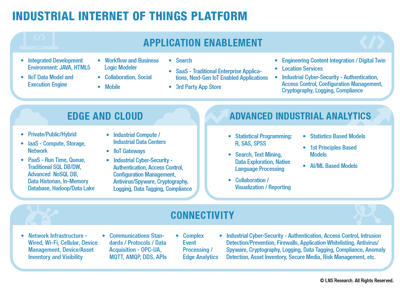 In my last two (first and second) DCS related posts I have laid out the rationality for why the Industrial Internet of Things (IIoT) will transform the plant floor from a control perspective, and what such a “controller-less” DCS might look like. Much of my case is predicated on looking back historically at the evolution of digital control and networking on the plant floor. Click here to speak to Dan
In my last two (first and second) DCS related posts I have laid out the rationality for why the Industrial Internet of Things (IIoT) will transform the plant floor from a control perspective, and what such a “controller-less” DCS might look like. Much of my case is predicated on looking back historically at the evolution of digital control and networking on the plant floor. Click here to speak to Dan
I can claim a certain amount of expertise in this area having written a book on the subject, albeit more than two decades ago. So, if we accept that IIoT platforms will emerge that make for truly distributed control and, given the pace of change in the industry, it will likely occur over the next three to four years. Who will be providing the IIoT enabled control systems as we close out this decade and move into the next? Here are 4 indicators of what I believe will be the successful control systems providers looking forward to the 2020 to 2025 timeframe.
1.) Hardware Still Matters
Whether the distributed control system (DCS) used in process manufacturing or discrete and batch manufacturing programmable logic controllers (PLC’s), hardware has been the defining difference between the suppliers. But, it has been the controller and I/O systems that talk to the sensors and actuators that have been the hardware that was so important. In the IIoT era the controllers and dedicated I/O racks become optional and potentially even irrelevant and truly smart sensors and actuators become the differentiating hardware.
This gives an edge to suppliers that have a catalog of field devices that can become the edge devices that form the backbone of truly distributed control. So it is this field hardware, closest to the production assets and part of the production processes, that become the hardware that matters in the IIoT era; along with the User Interface (UI) devices that people will interact with to monitor, diagnose, and manage the processes.
2.) Software Is Critical
Part of what defined a PLC or DCS system was the reliability and robustness of both the hardware and the software. As the computing moves to the edge, software will have to replace some of the robustness that the proprietary hardware provided. An example is that most PLCs allowed for hot swapping I/O blocks and in some cases, even controller processor cards. With the control moving to the Cloud the software must ensure that there is sufficient robustness to ensure that the system has uptime as good or better than existing alternatives.
Another aspect of the software is that it must have powerful Predictive Analytics, that are capable of machine learning. This Big Data handling capability will be one way of ensuring that the process, under control, is performing as expected. The ability to process large streams of data and react on the fly will replace the rigid control algorithms of previous generations of control, acting more like humans than a highly defined and programmed computer operating under rigid boundaries.
The software providers that can provide the entire IIoT platform, as well as the control and analytics software capabilities, are most likely evolving from the traditional automation and control community The software providers could also be newcomers to the field with functionality developed in the more IT oriented consumer side but have migrated to the OT side with high speed analytics and machine learning capabilities.
3.) The Right Model Ties It All Together
In my first two posts on this topic I introduced the concept of a hierarchical model based on the production assets, instead of the control system layered on top of the process instrumentation. In a controller-less environment having a hierarchal model that is not only accurate, but self-identifying and configuring will be a trait that defines the companies that truly have embraced all that the IIoT promises.
In many of our posts we have talked about how Smart Connected Assets are the foundation of Smart Connected Operations and Digital Transformation. These Smart Connected Assets, by definition, are highly aware of their environment and recognize their fit into the asset hierarchy. It is this combination of powerful, communicative and intelligent field hardware with software that provides the reliability, security, and intelligence, that enables this asset driven hierarchy to be successful. Companies that understand this and deliver on it will be those that thrive in the IIoT era.
4.) Darwin Was Right: Adaptability Ensures Survival
According to Darwin’s Origin of Species, “it is not the most intellectual of the species that survives; it is not the strongest that survives; but the species that survives is the one that is able best to adapt and adjust to the changing environment in which it finds itself.”
This statement perfectly defines which control systems purveyors will survive throughout the next decade. The IIoT is still evolving, Cloud technology is still grappling with reliability and security concerns, although significant progress in addressing the greatest concerns is being made and the power of Predictive Analytics is still developing. A company that stays rooted in rigidly hierarchical controller-based systems, digital but dumb I/O, and proprietary communications that maintain the IT-OT divide cannot, and will not be the choice of progressive manufacturers after 2020.
